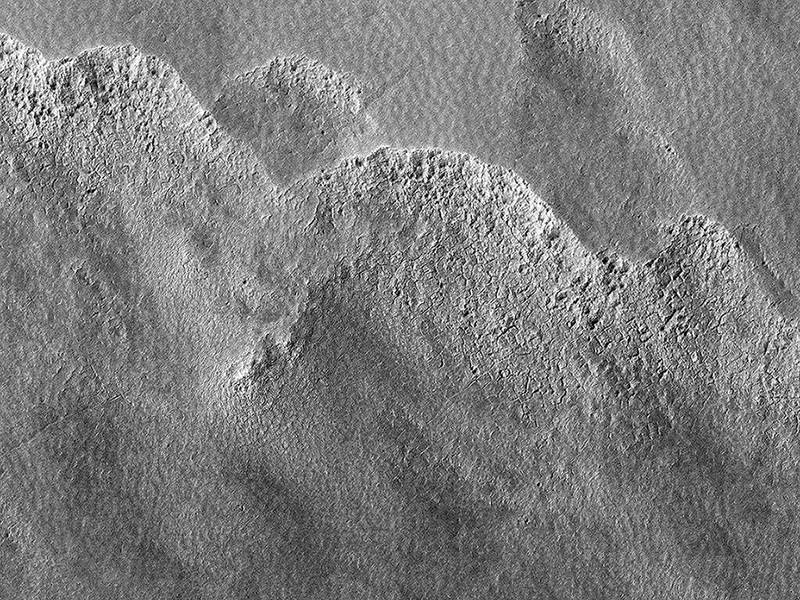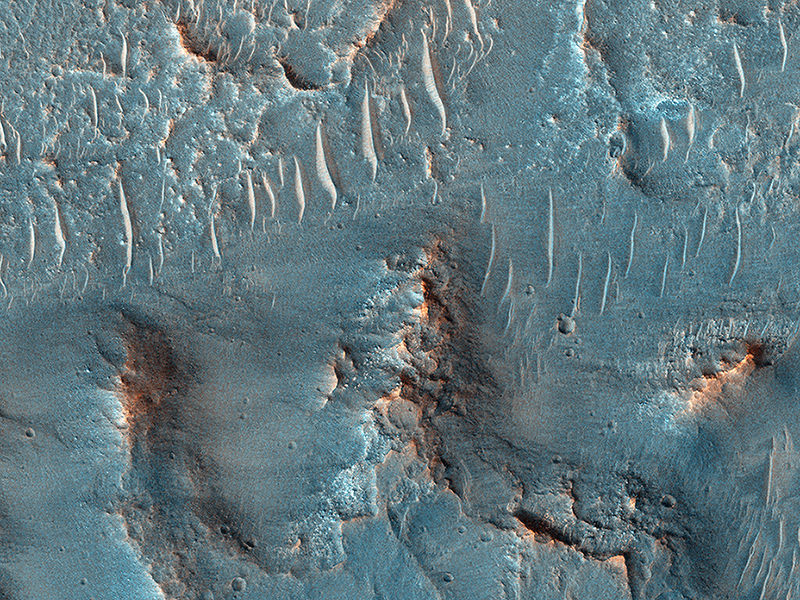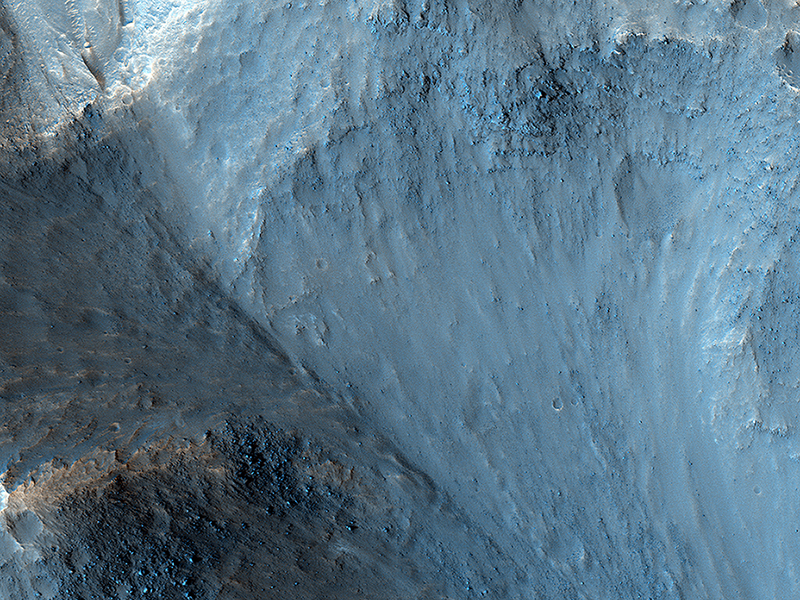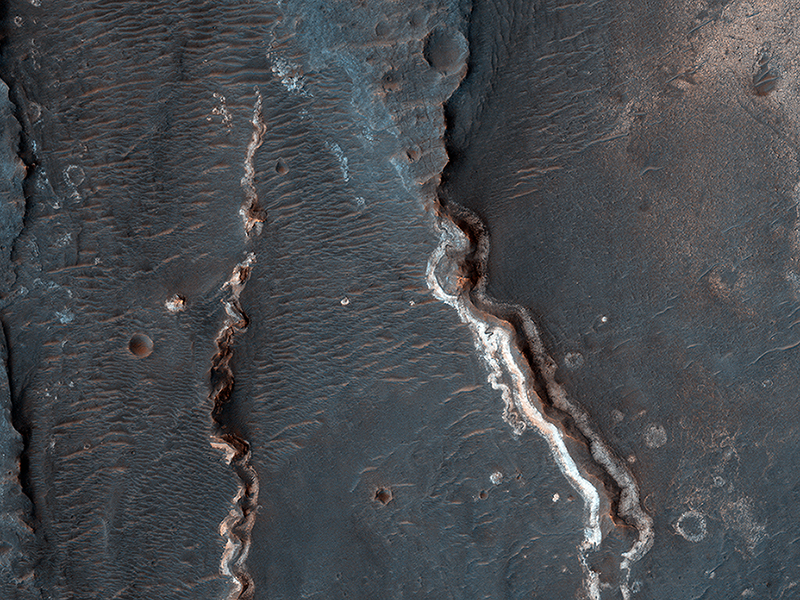Henrik Hargitai and Ginny Gulick wrote:Pitted Landforms in Southern Hellas Planitia (ESP_038821_1235) (HiClip)
This image is of a portion of the Southern plains region within Hellas, the largest impact basin on Mars, with a diameter of about 2300 kilometers (1400 miles).
There are three main phenomena apparent in this image. First, the faint dark streaks that criss-cross the terrain are dust devil tracks that clear the bright dust along their way. Second, the subtle overall bumpy “basketball” texture of the surface is formed by repeated seasonal freezing and thawing of the ice-rich regolith and is common at higher latitudes. Third, the large, elliptical, scalloped depressions are common in permafrost terrains in both hemispheres, where thick, latitude-dependent sedimentary mantles comprise the surface units.
These mantles are composed of ice-rich sediments that degrade as the ice sublimates away and is heated either by the Sun or by locally higher geothermal gradients. Sublimation, or the direct change in phase from ice to gas, occurs on Mars because of its low density atmosphere. These depressions have steeper pole-facing slopes, whereas the equator-facing slopes gently fade into the surrounding terrain. At full resolution (see close up view), numerous sublimation pits and networks of polygonal cracks are visible on the steeper, unstable pole-ward facing slopes.
The overall morphology of this terrain is characteristic of what is called “thermokarstic degradation processes,” which is a term used to describe the formation of pits in an ice-rich terrain due to loss of ice creating pits and collapse features.
HiRISE Science Team wrote:At the Head of a Kasei Valles Cataract (ESP_039274_2055) (HiClip)
On Earth, cataracts represent regions where a river's gradient increases enough to create so much turbulence, that air gets incorporated into the water body forming a bubbly current sometimes called “whitewater”. This image covers a location that may have acted as a cataract in the Kasei valley region.
This observation samples the bedrock lithologies and gives us a measure of the post-flood erosion and modification history for the floor of Kasei Valles. At high resolution, we can also look for boulders.
While there is a HiRISE stereo pair adjacent to this location that captures much of this cataract, it also misses some of the head scarp that might be the most useful, scientifically.
This is a stereo pair with PSP_003948_2055.
HiRISE Science Team wrote:The Lowest Point of Osuga Valles (ESP_039326_1650) (HiClip)
Osuga Valles lies around 170 kilometers to the south of Eos Chasma, which is at the eastern end of the vast Valles Marineris canyon system.
This is an outflow area, probably the result of ancient and catastrophic flooding. This image shows part of a deep pit at the end of the valley, filled with small hills.
The length of Osuga Valles is approximately 164 kilometers, at times reaching a width of 20 kilometers and 900 meters deep.
This is a stereo pair with ESP_039181_1650.
HiRISE Science Team wrote:Possible Fluvial Features in Golden Crater (ESP_039405_1575) (HiClip)
This observation shows an interesting crater floor with what appear to be inverted channels, rounded lobe-like landforms, and light-toned layered deposits along the southern portion of the crater wall.
High resolution can help study the layers, with an enhanced-color image showing us any variations in composition between those light-toned layers and the darker-toned surfaces.
This is a stereo pair with ESP_031005_1575.
Credit: NASA/JPL/University of Arizona
<< Previous HiRISE Update



